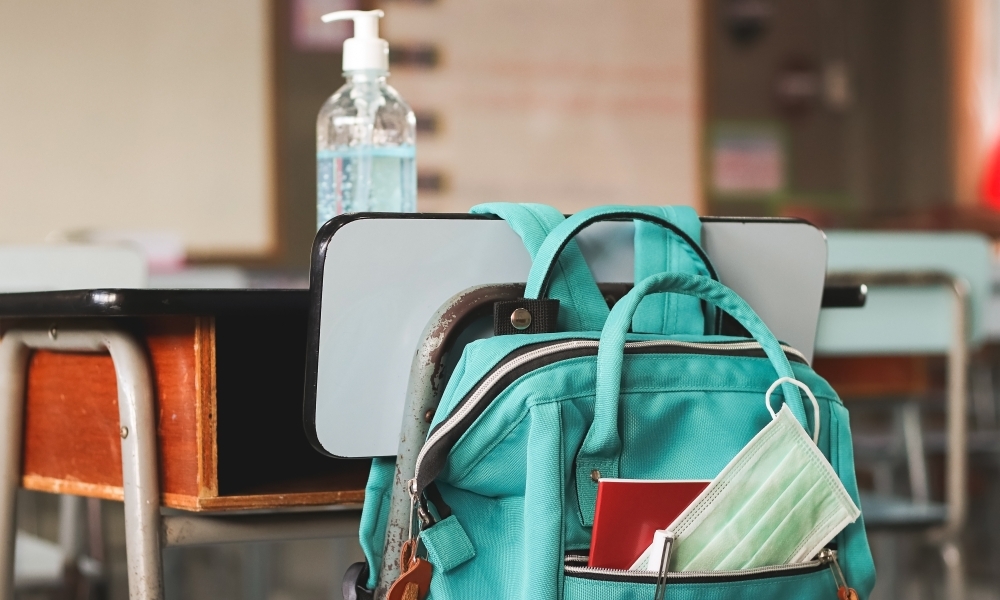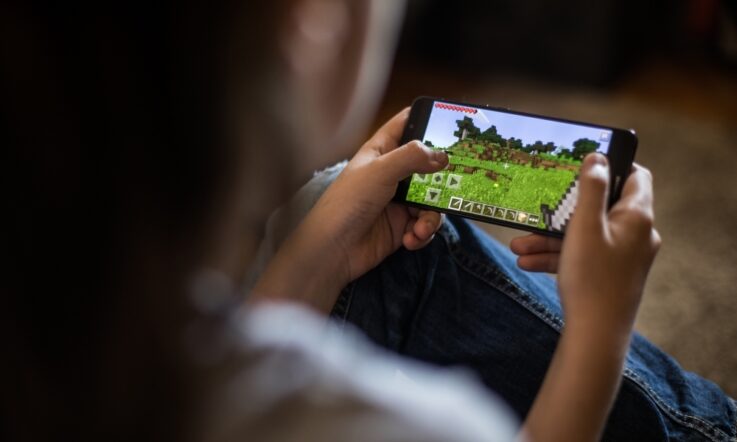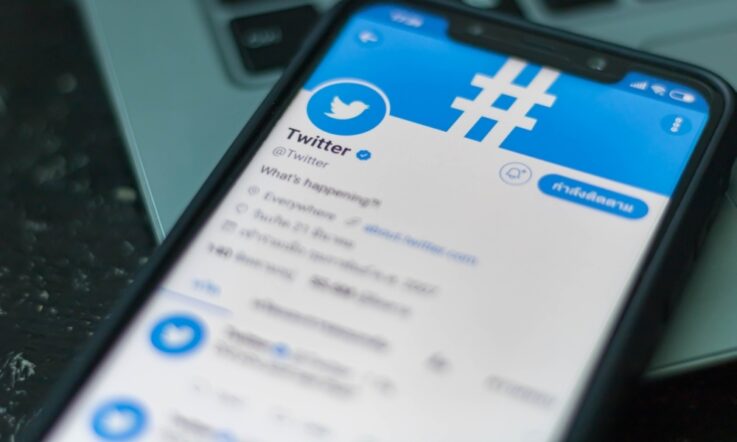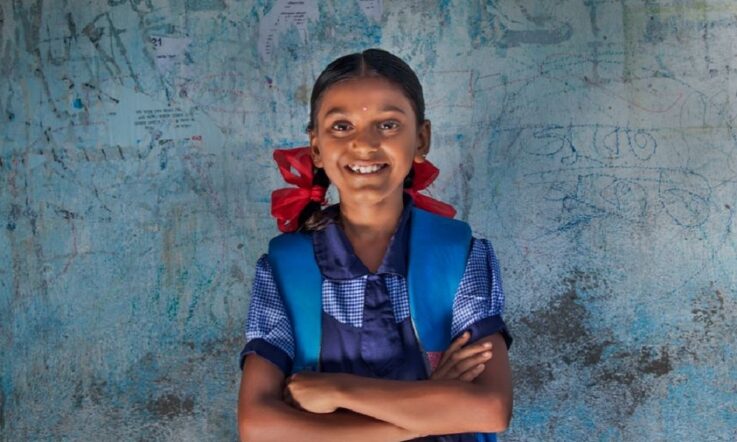With schools set to reopen after the COVID-19 nation-wide school closures, education authorities need to support teachers in these crucial times. To tackle new challenges, teachers’ roles and responsibilities will expand and play a prominent role in the recovery, explains Vimala Ramachandran.
The last few months have been unprecedented. Never before have schools been closed for such a long stretch due to a natural or man-made calamity. Children are not only at home, but are bombarded every day with messages that generate fear of this unknown contagious disease, COVID-19.
Adults around them are scared and overprotective − poor and middle-class families are afraid of losing their livelihoods and many have had to confront hunger and food shortages. In such circumstances, children are confused and afraid, and most importantly, there is no one to whom they can turn to for reassurance.
The families of migrant labourers faced a different kind of trauma as they made the long journey back to their villages from the cities, taking their children along; many children were suddenly thrust into an unfamiliar milieu. Those studying in urban government or low-cost private schools have had to now join a rural school where they may have dealt with another medium of instruction, a different environment, and perhaps far fewer school facilities. These are indeed trying times for children, teachers, and parents.
Teachers too are going through a traumatic phase. Anecdotal reports trickling in reveal that many teachers in low-cost private schools have lost their jobs, contract teachers in government schools have not been paid their salaries since the lockdown, non-permanent teachers are unsure if they would continue to have their jobs, and most worrying of all, there is the continuing uncertainty around school reopening. An article on the news channel NDTV recently highlighted the case of teachers from private schools enrolling for daily wage work in rural areas.*
Equally upsetting is the pressure on secondary school teachers to finish the syllabus and prepare students for examinations. Given the financial crisis being faced by farmers, traders, and small business persons, teachers say that many children have not been coming for tuitions. Non-governmental organisations (NGOs) working in rural areas note that most tuition centres or classes are dysfunctional – the need for physical distancing and financial stress are possible causes.
Teachers may themselves be suffering from the ill-effects of the pandemic such as a death in the family or depression, and may find it difficult to focus. While having a discussion with my colleague Subir Shukla who worked with teachers in the post-Tsunami period in the Andaman and Nicobar Islands, he mentioned that a set of clear guidelines and instructions can help teachers tackle a crisis − ‘we found our pedagogy inputs providing psychosocial succour as it gave them some sort of way forward…’ Therefore, it would be important to provide teachers with a forum or space at the cluster or block level to voice their concerns and talk to each other.
In some states, teachers seem to be comfortable with online processes, which provide scope for online and on-demand counselling. On the other hand, in most of central, eastern, and northern India, internet access in rural areas is still unreliable and there may be a large number of teachers who are likely to be unfamiliar with online processes. In such areas, physical workshops and a nodal person who can be contacted either through phone or WhatsApp can be explored as a support mechanism.
Writing in the Indian Express, Ameeta Mulla Wattal, Principal, Springdales School pointed out that ‘...going forward, in the new post-pandemic environment, what will be required is a huge shift in mindset − both social and emotional.’ Senior officials in the education department of several states that I interacted with on the telephone said that they have not yet started thinking about what they may have to do when schools eventually reopen a few months from now.
At this stage, some state governments like Rajasthan, and to some extent Chhattisgarh and Jharkhand, are gearing up for increased enrolment in rural schools because of the unprecedented reverse migration to villages. Based on recent interactions, I am not too sure if the governments of Bihar, Uttar Pradesh, and Madhya Pradesh have accounted for in-migration as a concern when schools reopen. It seems there is little forward planning to accommodate the influx of children in rural schools.
The Economic Times on 16 April [2020] reported that NCERT has apparently worked out a curriculum for a revised academic year – this applies to schools that have adopted the NCERT curriculum through the Central Board of Secondary Education (CBSE) of India. While these are systemic issues that need careful block or district level planning, there are several psychosocial issues that merit urgent attention. Given that the present situation is dynamic, the issues and concerns given below are not in any sequential order and all of them may have to be addressed simultaneously.
As one of the first steps before schools re-open, there is an urgent need to organise block level and ward-level workshops for teachers to enable them to support children. Fear of the unknown virus, disruption of their daily life, hunger and other forms of deprivation will inevitably impact children.
Instead of jumping straight into teaching, all schools will have to facilitate structured interactions with children, listen to them, understand their apprehensions and fears, and provide them with a loving and caring environment. This kind of support was given in many schools after the devastating Kutch earthquake in 2001. Several NGOs and multilateral agencies like UNICEF developed modules to train and orient teachers to support traumatised children. This kind of work needs to be done at a much larger or nation-wide scale.
Similar experiences were narrated by people who worked with schools after the devastating Tsunami of 2004. As Subir Shukla said to me ‘Students themselves will need a great deal of emotional ‘rehabilitation’, so more listening exercises, interaction and sharing, more group work (with physical distance), and involving them in planning of what to do ahead (even in the youngest classes) can help… such group sharing can be a healing experience for all involved.’
It must, however, be underscored that just issuing government orders asking teachers to do this will not work – education departments will need to work with child psychologists and child protection activists to develop a training module that is rolled out for all teachers in all schools – both government and private ones. This can be done for a cluster of 20 odd schools involving all the teachers, school heads, and concerned administrators.
There is also a need to prepare teachers for conducting accelerated learning classes to help children recall and get back into the rhythm of learning. While children studying in well off private schools from the middle-class families may have had the opportunity to learn through online classes, children from poor, lower middle-class, and migrant worker families do not have such privileged access to any form of online education. Many do not even have access to the TV classes that were supposed to have been organised in several states.
The clearly visible digital divide needs to be factored in and schools that cater to the poor and the marginalised have to set time aside to support an accelerated learning programme. The strategies adopted for primary pupils may be very different from secondary students, thus, it would be important to take on board and learn from a wide variety of accelerated learning initiatives that have been tried out in India over the last few decades.
This issue needs to be taken on board by the National Council of Educational Research And Training (NCERT) and the State Councils of Educational Research And Training (SCERTs) when they roll out the truncated syllabus for the current academic year and the following academic year (2019−20 and 2020−21). Equally, Corporate Social Responsibility (CSR) resources should be channelled to bridge the digital divide between different types of schools in both rural and urban India.
Central and state governments, and academic bodies like NCERT and SCERTs, have to send a clear message to teachers not to rush through the syllabus, but to take time to help children cope with their trauma, refresh what they have learnt before the lockdown, and consciously create a loving and caring environment. This may take a month or two, and state governments will need to communicate to schools the importance of a gentle approach when children come back to school. This would be particularly important in rural schools that may see a surge in enrolment of children who have come back from urban areas.
Supporting the newly enrolled children who may have had very different experiences would be critical to ensure that they settle down and feel comfortable. Teachers need to be aware that there may be tensions between the children who have returned from urban areas and those who have always been in the village. Managing tensions and counselling children would be an additional task when schools reopen.
There is a real danger of children in higher classes dropping out, and girls may be particularly vulnerable. It is important to prepare teachers to identify vulnerable students, counsel them and their families, and encourage them to not drop out. In some areas, adolescent boys may be under greater pressure to drop out and support the family – either in the field or through daily wage labour.
The situation will vary across different areas and depend on the occupation of the communities. For example, many boys dropped out in the post-Tsunami period in the affected areas when each family got its own fishing boats. Earlier a few families together used one boat to fish as a group – but when individual boats were given to families, young boys had to drop out to go into the sea accompanying their fathers. This was noticed in Tamil Nadu and Andhra Pradesh as well.
Therefore, schools and teachers need to be aware of these context-specific issues. Where necessary, Subir Shukla advises that short-term partial attendance should also be offered. This could perhaps be achieved by enrolling such students in an open school and preparing them for open-school examinations for grades 10 and 12.
The school health program also needs to be re-designed and allocated more financial and human resources. Teachers need to be aware of the impact of poor nutrition and hunger on their students and calibrate the mid-day meal program in such a way that children are provided additional nutrition. To this end, teachers may have to work closely with the Panchayat, the local PHC / Sub-Centre, and Anganwadi Centre to ensure all children are given nutritious food. Each state may have to design and roll out a school-health and nutrition program to address the impact of hunger and inadequate food during the lockdown and post-lockdown period. The contours of such a program would have to be developed afresh.
Essentially, what is being argued is that the role of the teachers in the post COVID-19 lockdown phase would have to be multi-faceted – they will need to become counsellors, friends, shoulders to cry on, rocks to lean on, sensitive caregivers, and teachers. Teachers need support to reclaim the trust of parents and the larger community around the school. A dialogue with teacher unions and teacher forums may help bring these issues upfront.
This pandemic has not only been an unprecedented tragedy for many of our children, it may also provide us a new reset button to reimagine the school, give greater autonomy to teachers, provide on-site and on-demand support to them, and above all make our schools caring, loving, and vibrant spaces where children feel safe and happy. This cannot happen without the support and active involvement of school teachers and the community of parents.
This pandemic provides our educational administrators a fresh chance to build trust with teachers instead of treating them as lower-ranking employees to order around.
Maybe the time has come to initiate a series of dialogues and public debates on reimagining the school in the post lockdown period and using it as an opportunity to introduce reforms that have eluded us for a long time. People with influence in the education sector in India need to reach out to the policy makers and apprise them of the urgent need to prepare schools and teachers before they are formally reopened.
*Chiranjeevi and his wife Padma set off early morning on their bike to their work site. Both were till recently teachers. Chiranjeevi holds a postgraduate degree and also a B Ed degree that made him a social studies teacher 12 years ago. Padma holds an MBA degree and was working as a primary school teacher. The couple have now become manual labourers. For the last few days, they have been going to the MGNREGA work site near their village in Bhongir-Yadadri because they have received no salary in two months and there is no telling when it may come again amid the coronavirus pandemic.. (https://www.ndtv.com/india-new...)
Acknowledgements: I would like to thank Subir Shukla, Deepa Das, and Kameshwari Jandhyala for their valuable inputs. They were my sounding boards when I was writing this article.
A version of this article first appeared in the print magazine Teacher, distributed in India, in July 2020.
References
The Economic Times. (2020, April 16). COVID-19: NCERT develops alternative academic calendar to engage school students during lockdown. The Economic Times.
Uma Sudhir. (2020, May 20). Teachers, Techie Who Made 1 Lakh Turn MGNREGA Labourers Amid Pandemic. NDTV. https://www.ndtv.com/india-news/ coronavirus-teachers-techie-who-maders-1-lakh-turn-mgnrega-labourers-amidpandemic-2232388.
Wattal, A.M. (2020, April 23). Postpandemic, a shift in mindset will be needed — to teach and learn. The Indian Express.



